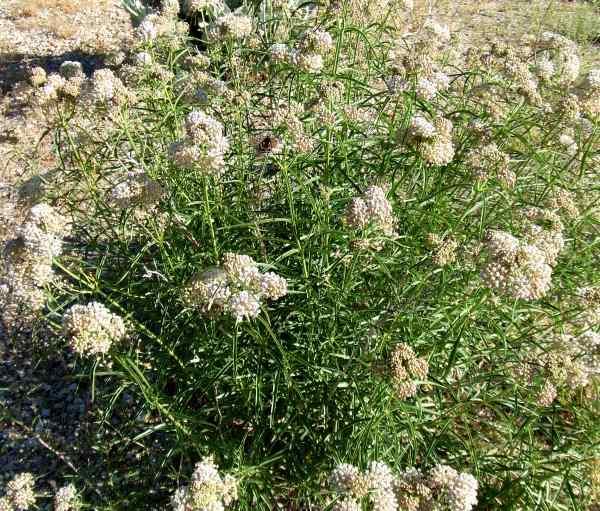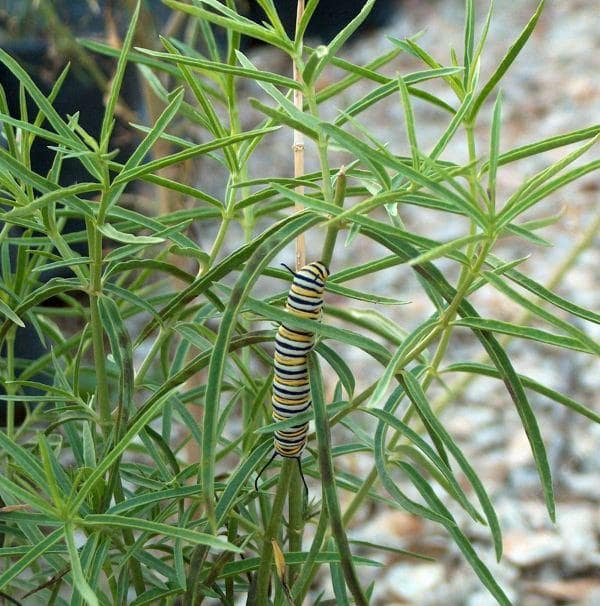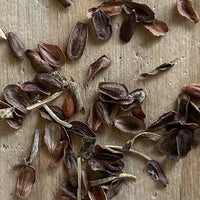
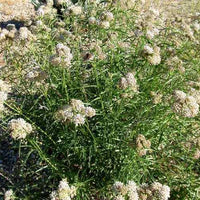
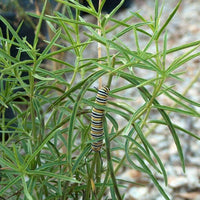
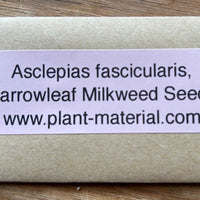
Asclepias fascicularis seeds, Narrowleaf Milkweed Seeds
Narrowleaf Milkweed
A perennial with three foot tall stem and large but narrow five inch leaves that bloom in the summer. The Narrowleaf Milkweed provides food for monarch butterfly caterpillars and provides nectar for hummingbirds and nest building materials for other birds
- Plant in full sun
- Tolerant of a wide range of soil types, including clay
- Mulch heavily
- Water well for the first month
- Drought tolerant
- Poisonous to dogs
- California Native
- Non-GMO
- Perennial
- Sun: Full
- Indoors: 8 weeks before last frost
- Direct Sow: In the fall, or in the spring after cold stratification
- Seed Count: 30
- Plant Size: 3'-5'
- Ornamental
- Attracts pollinators
Growing Tips:
Narrowleaf seeds must be stratified, if they are planted in the spring, for proper germination.
Plants may appear eaten, but that is the monarch caterpillars feasting. After initial blooming season, plants require minimal moisture. Fall time pruning will help it go dormant. Leave 1" stick.
This content type will accept rich text to help with adding styles and links to additional pages or content. Use this to add supplementary information to help your buyers.
You can use product metafields to assign content to this tab that is unique to an individual product. Use tabs to highlight unique features, sizing information, or other sales information.
Narrowleaf Milkweed
A perennial with three foot tall stem and large but narrow five inch leaves that bloom in the summer. The Narrowleaf Milkweed provides food for monarch butterfly caterpillars and provides nectar for hummingbirds and nest building materials for other birds
- Plant in full sun
- Tolerant of a wide range of soil types, including clay
- Mulch heavily
- Water well for the first month
- Drought tolerant
- Poisonous to dogs
- California Native
- Non-GMO
- Perennial
- Sun: Full
- Indoors: 8 weeks before last frost
- Direct Sow: In the fall, or in the spring after cold stratification
- Seed Count: 30
- Plant Size: 3'-5'
- Ornamental
- Attracts pollinators
Growing Tips:
Narrowleaf seeds must be stratified, if they are planted in the spring, for proper germination.
Plants may appear eaten, but that is the monarch caterpillars feasting. After initial blooming season, plants require minimal moisture. Fall time pruning will help it go dormant. Leave 1" stick.


